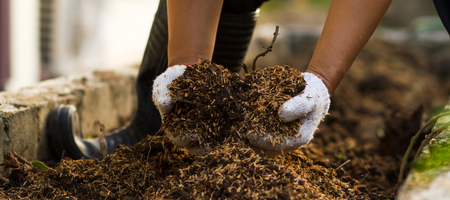
Green Stormwater Infrastructure: Does it need to be green?
By Kari Nichols, PE, Mead & Hunt
Green Stormwater Infrastructure (GSI) is one strategy water professionals use to provide clean water to the communities we serve. GSI is a way to treat stormwater runoff within a project site, allowing plants or soil systems to filter stormwater pollutants. Based on the name, one might presume that the green component — the vegetation — is critical for effective treatment. Vegetation definitely helps a treatment system, and it adds a beautification component that is also linked to other known societal and health benefits. Yet how critical is vegetation to the effectiveness of GSI treatment systems? Can you have effective GSI without vegetation?
Challenges To Incorporating Vegetation In GSI
These are important questions to discuss because adding vegetation to a GSI treatment system is not always possible or practical. Establishing vegetation may be challenging in cold climates or drier climates. It may require irrigation, which is not practical or desirable in certain situations. There may be land uses that also limit the use of vegetation, such as dense urban infill projects. There may be safety concerns with wildlife attractants of certain types of vegetation at or near airports. Often these challenges can be overcome with proper plant selection, yet non-vegetated GSI solutions, such as permeable paving and engineered soil mixes, can be just as effective at stormwater treatment.
Non-Vegetated GSI Solutions
Permeable or porous paving allows for stormwater runoff to infiltrate through the pavement section and into the ground beneath the pavement. These systems reduce fine sediment that often contains known pollutants of concern. In addition to trapping fine sediment, these systems provide biochemical treatment through the presence of bacteria and other microbes that break down pollutants. United States Geological Survey (USGS) is studying the effectiveness of permeable pavement on stormwater runoff treatment, which has been shown to reduce pollutants in stormwater runoff through use of these non-vegetated systems.
Engineered soil mixes consist of a filter media layer which traps pollutants as stormwater runoff flows through the media. These soil mixes typically consist of a combination of sand; finer soil, such as silts and clays; and organic matter, such as compost. Various researchers have studied how effectively these soils remove pollutants and evaluated the potential of these media to export pollutants. These soil mixes are used in many types of GSI facilities: bioretention cells, biofiltration swales, and green roofs which support vegetation to aid in pollutant removal. These mixes are also used in proprietary engineered treatment devices, which also may include vegetation to aid in pollutant removal. Studies done for Washington State approvals on general use level designation (GULD) for basic, enhanced, and phosphorus treatment on The BioPod™ Biofilter and MWS-Linear Modular Wetland Stormwater Treatment System have demonstrated that these systems are just as effective at removing tested pollutants with or without vegetation.
I much prefer vegetated systems, yet as a stormwater professional interested in supporting overall watershed health improvement, it is good to know that effective treatment can still be achieved without vegetation when necessary.
